Ah, the fall. Who doesn’t love the way the crisp breeze blows through hair? The leaves change colors to brilliant reds and oranges, and the days get a little shorter. It’s the time of the year that brings out a cozy feeling; it makes us seek out warmth in ways that the weather isn’t providing us. Today, that is in the form of a warming, cinnamon essential oil soap.
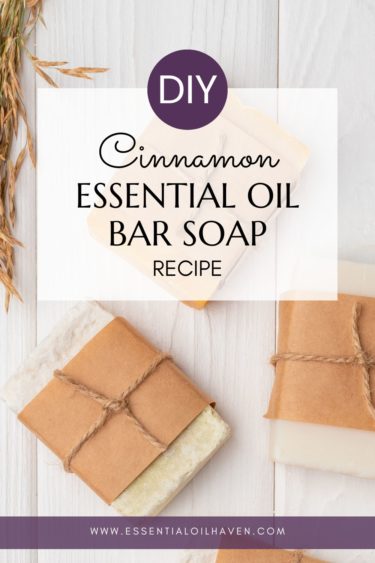
The fall season is known for its ventures into the spices. After all, there are many staple flavors and aromas that speak autumn weather:
This post contains affiliate links, which means if you make a purchase through these links, I may receive a small commission at no extra cost to you. Read my full disclosure policy here.
- The long-awaited pumpkin spice drinks enriched with nutmeg, cinnamon, and ginger.
- Hot apple cider that boasts a flavor profile rich in cinnamon, and allspice.
- Classic maple-infused doughnuts, and desserts complete with a sprinkle of spices, too.
It’s just how it is; the fall and spices work well together. That is why this homemade DIY cinnamon soap is a must-make on your list for the perfect home companion.
Homemade Soap Making
Many may think that the words homemade soap making are intimidating. That’s understandable, since for so long soaps have been boxed, and placed on a shelf to buy conveniently.
Yet, soap making is simple! The steps involved need no more than a melt-and-pour base, a mold of your choice, some essential oils, and a microwave or stove top.
That’s really it! The hardest part in soap-making is deciding which scent to choose. There are so many lovely essential oils to choose from! Take some time to look through your aromatherapy collection, and make sure you pick the right oil.
When it comes to making the soap itself, the steps are under five. All you’ll have to be is patient about waiting for it to solidify. Once done, the result is a magnificent, unique-to-you homemade soap. Don’t be shy to place in your bathroom and show it off to guests!
How To Make Cinnamon Oil Soap
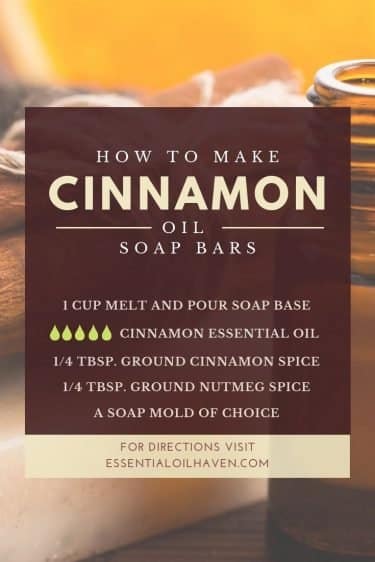
Now it’s time to get down to business and make this delightful, seasonal soap.
To make this natural cinnamon soap recipe, you’ll need the following items.
Ingredients
- 1 Cup Melt and Pour Soap Base (Like this one)
- 5 Drops Cinnamon Essential Oil
- 1/4 Tbsp. Ground Cinnamon Spice
- 1/4 Tbsp. Ground Nutmeg Spice
- A soap mold of choice (We used this one)
Next, these are the steps to achieve the soap! Put on your creative hat and get excited!!
Recipe Instructions
- Melt the soap base over a double boiler on the stove, or in the microwave in intervals of 30 seconds until thoroughly melted.
- Remove the melted soap base from the heat.
- Add essential oils, ground cinnamon, and ground nutmeg to the base.
- Stir together to make sure the result is a uniformed mixture. Use a wooden spoon to do this.
- Pour the liquid mixture into your soap mold of choice.
- Place in the refrigerator and let the mold set for at least 30 minutes.
Now you’re good to go! Use the soap in the shower or place as a hand soap in your guest bathroom. Add a few cinnamon sticks as a decoration; the options are limitless!
Benefits of Cinnamon Oil Soap
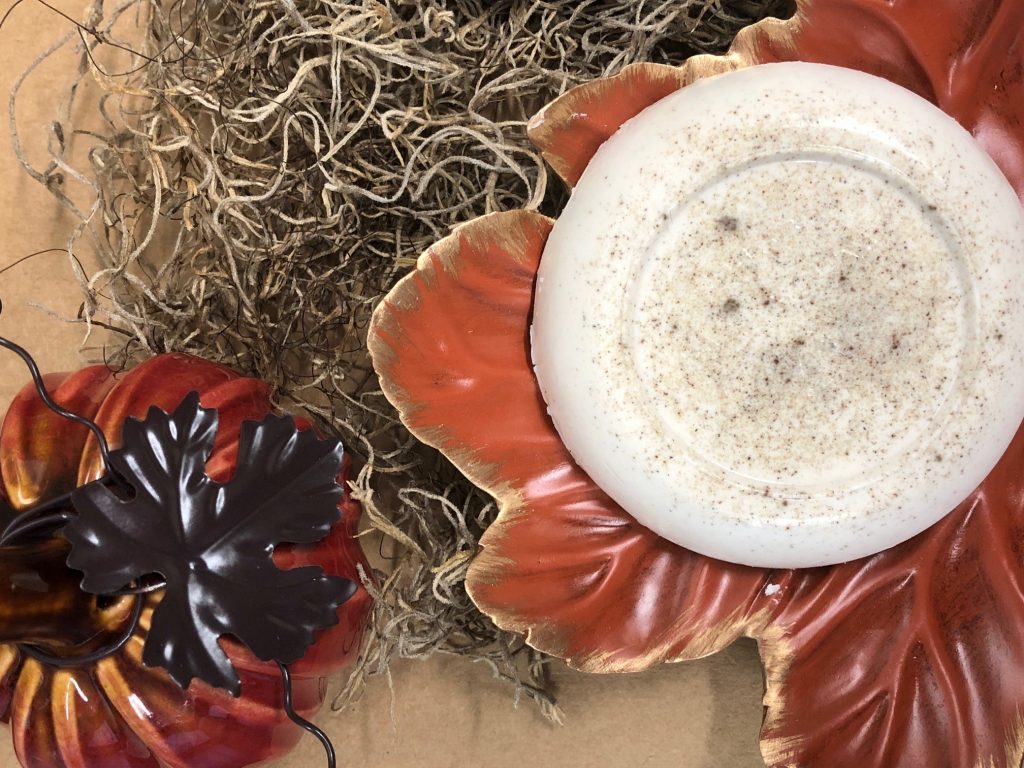
Make this easy homemade Cinnamon DIY soap.
Buy Cinnamon Essential Oil
It’s only natural that when the weather outside is chillier, the shower becomes an area of comfort. Soap bars are a wonderful way to enjoy a shower with a unique, seasonal scent.
The scents of aromatherapy in the shower help to add an ultimate comfort factor to autumn days.
This natural cinnamon soap combines the relaxing nature of aromatherapy with a gentle exfoliation.
- The aroma of cinnamon will help add a soothing ambiance to your shower routine.
- The addition of ground cinnamon and nutmeg will gently work on the skin to remove any dirt.
The result is a full-body, spa-like moment that will leave you smelling like the season, and your skin feeling soft to the touch.
About Cinnamon
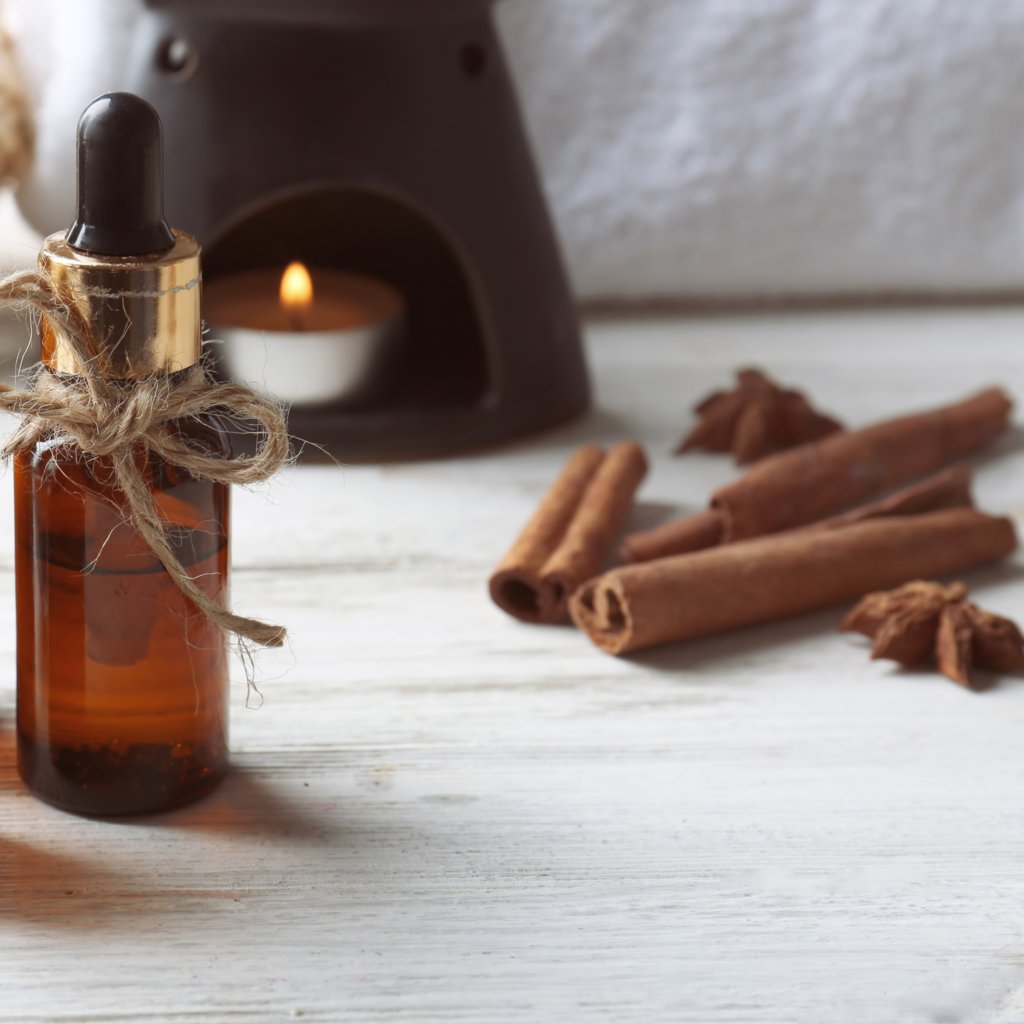
Cinnamon essential oil is a fall favorite with its warm and cozy feel.
Shop Here
In today’s post, we’ve decided to go with the classic autumn scent, cinnamon. Let’s go over a few key components of this aromatherapy favorite.
Cinnamon essential oils are sourced from the bark and leaves of this evergreen tree. It’s native to Sri Lanka but can be found growing in various regions worldwide. The harvesting process for cinnamon can take two years, this is when the tree is deemed okay to coppice it or cut it.
The tree is used for many things; its bark can be stripped and turned into cinnamon sticks, the leaves can be steam-distilled into an essential oil. No matter the way it is produced, one thing remains the same—the alluring Cinnamon scent.
History
Cinnamon has a long history, which comes as no surprise since it is a pantry staple today. It has been used by people as far back as 2,000 B.C. and was a prominent spice in the ancient world.
While cinnamon is currently seen as a commodity product on the market, this hasn’t always been the case. In fact, back in the early days of its use, the spice was only affordable to the rich. Arabic traders transported it along a long, difficult trade route, which in turn led to increasingly high prices. Therefore, the connection between cinnamon and royalty arose.
In Egypt, cinnamon was a part of the embalming process, and was added to meals for flavoring. During Medieval times, doctors used cinnamon to soothe different ailments.
Overall, the spice played a large role in the lifestyle of people in the ancient world.
Scent
Cinnamon oil is an aromatherapy favorite, since it has an intrinsically warming fragrance. It can be described as sweet, dry, and spicy. The scent calms the mind and promotes a sense of relaxation within the spirit. It makes the perfect companion to any meditation session or bubble bath!
Final Thoughts
Today we’ve covered a lot of ground regarding cinnamon. This classic has been a favorite for thousands of years, and with its level of versatility, it’s easy to see why.
Hopefully you enjoy the soap recipe… Comment below to let us know how yours turns out!
References
- https://www.thespruceeats.com/history-of-cinnamon-1807584
- https://www.history.com/news/cinnamons-spicy-history
- https://www.history.com/news/spices-of-life-in-ancient-egypt
- http://www.cinnamonvogue.com/cinnamonhistory.html
Looking for more DIY recipes from Piping Rock? Visit instructions for two easy DIY blend roll-ons on their blog.
See also:
- 5 Alternatives to the Young Living Thieves® Blend
- Top 7 Essential Oils for the Cold and Flu Season
- 10 All-Time Favorite Fall Diffuser Blends (with Free Printable)
About the Author
Alivia Massimillo is the Copywriter at Piping Rock. Piping Rock is a health and wellness brand that manufactures its own essential oils, supplements, and vitamins. We provide high-quality, and low-cost products to consumers and make sure that healthy living is accessible to everyone! By eliminating expenses related to outsourcing, distribution and retail locations, we dramatically lower operating costs without sacrificing quality. We are proud to pass the savings directly to you.
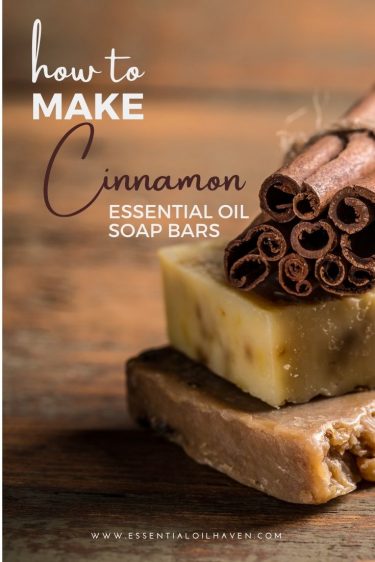




Sounds great! How many bars will this make in the mold you show? Thanks